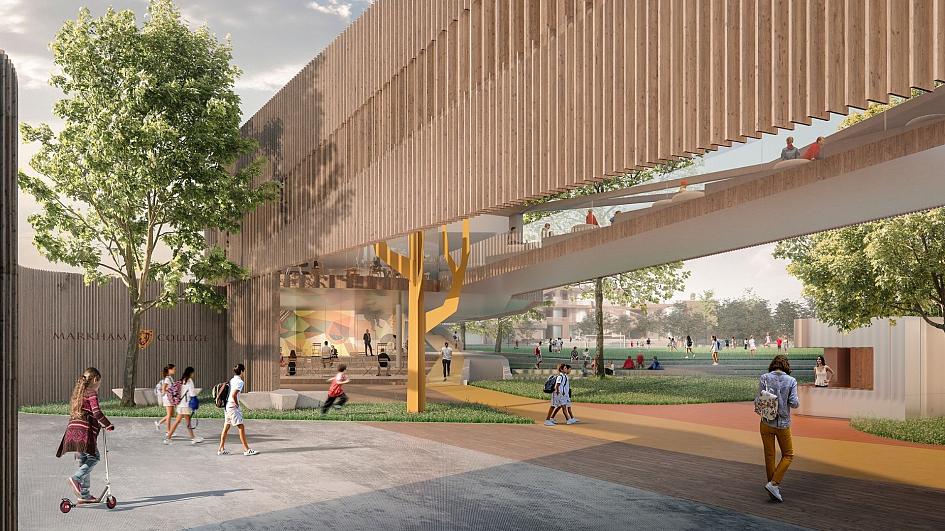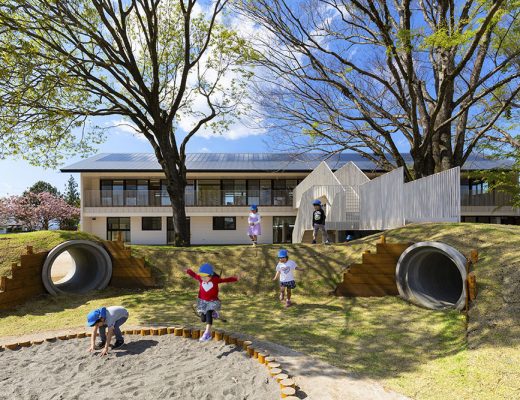As the ongoing Covis-19 pandemic continues to upend lives, one of the most pronounced effects has been on schools and educational institutions that have grappled with classroom learning. In Peru’s capital Lima, Markham College Lower school is being redesigned that seeks to reshape how young people will learn in the post-Covid-19 era. It will contain three stories of flexible, multipurpose areas that will encourage students to take part in learning outside just as much as they do in classrooms.
The school’s eco-friendly replacement grounds will exceed 929m2 (10,000 sq ft) and accommodate 750 students from ages 6 to 12. Future pupils will have access to a swimming pool, gym, science labs, and creative studios for art, music and drama.
The campus will be centered on a river that runs throughout in order to make the best use of the land’s natural topography. Vertical gardens, open rooftop play areas, and inner courtyards are all a part of the design. It will play a role in setting an example for the schools of the future as they work to create sustainable, better-ventilated spaces for children to learn in.
Collaborating with Danish architects Rosan Bosch, known for their ingenious education buildings spanning from Sweden to Dubai, Spanish architecture studio IDOM will create a school that addresses many of the planning problems when it comes to designing communal spaces in light of the Covid-19 pandemic.
To fulfill its sustainability goals, the school is working towards a goal of being carbon neutral. This includes features such as recycled wood panelling wherever it is structurally possible, along with systems in place that use natural shading and ventilation to reduce energy costs.
“We understand this new school as a landscape project. It is architecture based on the topography, natural materials and the Peruvian culture in relation to the landscape,” says Manuel Andrades, project director at IDOM.
“Sustainability is one of the cornerstones for our design strategy. We are building with a nearly zero-energy and net-zero carbon footprint while integrating local, reused, or recycled materials. The building is designed for natural cross ventilation that will provide 100% fresh air without any recirculation,” he explains.
“This pandemic has accelerated the future,” he adds further. “Cities have seen what they are capable of if they face a challenge, and therefore decisions related to climate change and its impact on the urban model, on the design of buildings, on mobility, should be made immediately”.
You might also like:




